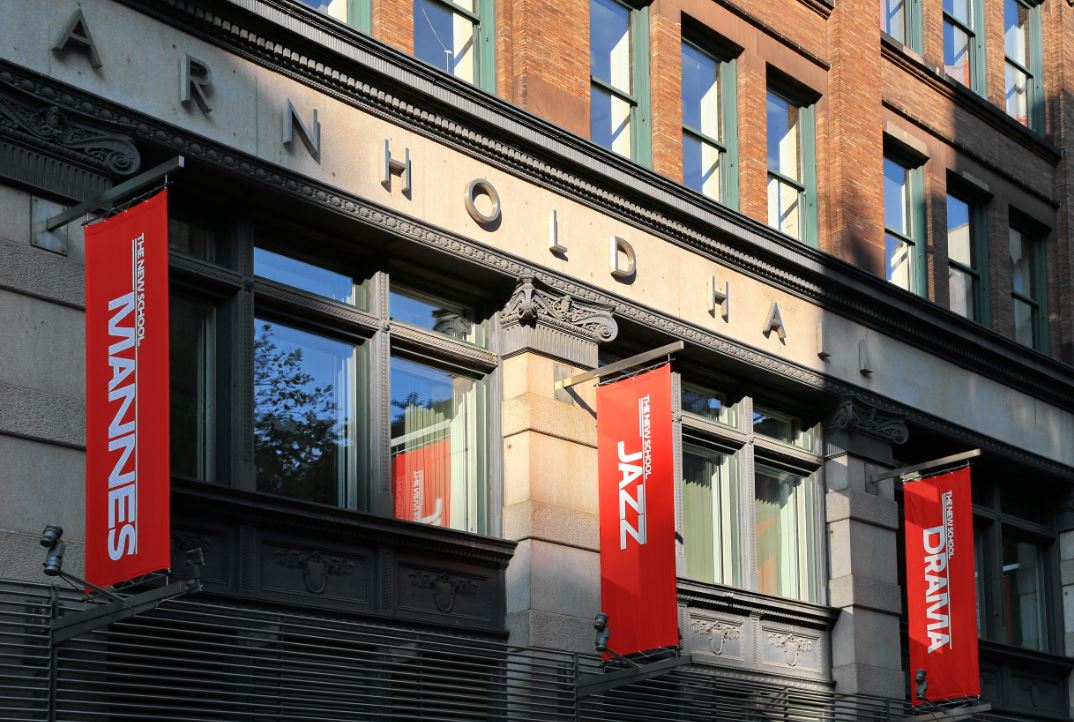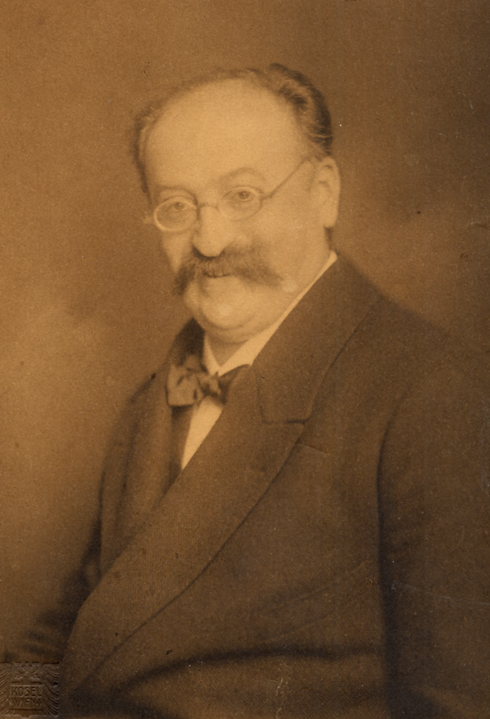|
Mannes College Of Music
Mannes School of Music is a music conservatory in The New School, a private research university in New York City. In the fall of 2015, Mannes moved from its previous location on Manhattan's Upper West Side to join the rest of the New School campus in Arnhold Hall at 55 W. 13th Street. History Originally called The David Mannes Music School, it was founded in 1916 by David Mannes, concertmaster of the New York Symphony Orchestra, and his wife Clara Damrosch, sister of Walter Damrosch, then conductor of that orchestra, and Frank Damrosch. The Damrosch and Mannes families were perhaps the most important music families in America at that time, with David Mannes emerging as one of the first American born violin recitalists to achieve significant status. David Mannes was the director of the Third Street Music School Settlement as well as founder of Colored Music Settlement School, all prior to founding the Mannes School. The school was originally housed on East 70th Street (lat ... [...More Info...] [...Related Items...] OR: [Wikipedia] [Google] [Baidu] |
Private University
Private universities and private colleges are institutions of higher education, not operated, owned, or institutionally funded by governments. They may (and often do) receive from governments tax breaks, public student loans, and grants. Depending on their location, private universities may be subject to government regulation. Private universities may be contrasted with public universities and national universities. Many private universities are nonprofit organizations. Africa Egypt Egypt currently has 20 public universities (with about two million students) and 23 private universities (60,000 students). Egypt has many private universities, including The American University in Cairo, the German University in Cairo, the British University in Egypt, the Arab Academy for Science, Technology and Maritime Transport, Misr University for Science and Technology, Misr International University, Future University in Egypt and Modern Sciences and Arts University. In ad ... [...More Info...] [...Related Items...] OR: [Wikipedia] [Google] [Baidu] |
Upper East Side
The Upper East Side, sometimes abbreviated UES, is a neighborhood in the borough of Manhattan in New York City, bounded by 96th Street to the north, the East River to the east, 59th Street to the south, and Central Park/Fifth Avenue to the west. The area incorporates several smaller neighborhoods, including Lenox Hill, Carnegie Hill, and Yorkville. Once known as the Silk Stocking District,The City Review Upper East Side, the Silk Stocking District it has long been the most affluent neighborhood in New York City. The Upper East Side is part of Manhattan Community District 8, and its primary ZIP Codes are 10021, 10028, 10065, 10075, and 10128 ... [...More Info...] [...Related Items...] OR: [Wikipedia] [Google] [Baidu] |
Opera News
''Opera News'' is an American classical music magazine. It has been published since 1936 by the Metropolitan Opera Guild, a non-profit organization located at Lincoln Center which was founded to engender the appreciation of opera and also support the Metropolitan Opera of New York City. ''Opera News'' was initially focused primarily on the Met, particularly providing information for listeners of the Saturday afternoon live Metropolitan Opera radio broadcasts. Over the years, the magazine has broadened its scope to include the larger American and international opera scenes. Currently published monthly, ''Opera News'' offers opera related feature articles; artist interviews; production profiles; musicological pieces; music-business reportage; reviews of performances in the United States and Europe; reviews of recordings, videos, books and audio equipment; and listings of opera performances in the U.S. The Editor-in-Chief is currently F. Paul Driscoll. Regular contributors to the m ... [...More Info...] [...Related Items...] OR: [Wikipedia] [Google] [Baidu] |
School Of Jazz (The New School)
School of Jazz and Contemporary Music is the second conservatory of The New School. It is located on West 13th Street in New York City's Greenwich Village neighborhood. It was known as The New School for Jazz and Contemporary Music before it was rebranded as School of Jazz and Contemporary Music and becoming part of College of Performing Arts at The New School in 2015. History The School of Jazz and Contemporary Music was founded by David Levy, a former dean of Parsons School of Design, saxophonist Arnie Lawrence, and Paul Weinstein, the first chairperson of the program in 1986, as the Jazz & Contemporary Music Program. The school holds the philosophy that artists should be mentors, thus many teachers are working professionals. Academics The School of Jazz and Contemporary Music offers Bachelor of Fine Arts (BFA) degrees in jazz and contemporary music with concentrations in vocal and instrumental performance. The core curriculum includes courses in performance, analysis ... [...More Info...] [...Related Items...] OR: [Wikipedia] [Google] [Baidu] |
Carl Schachter
Carl E. Schachter (born June 1, 1932"Carl E. Schachter," in "New Jersey, Passenger and Crew Lists, 1956-1964" on ''Ancestry.com'') is an American music theorist noted for his expertise in Schenkerian analysis. Born in Chicago, he attended Austin High School, graduating at age 16. Beginning in 1948 he began studies at the Mannes School of Music. He studied piano with Sara Levee, Isabelle Vengerova and Israel Citkowitz, and conducting with Carl Bamberger. Most significantly he studied with Felix Salzer, who was later co-author with Schachter of the influential text ''Counterpoint in Composition''. He received a Bachelor of Science from Mannes; an MA from New York University (musicology); and a DM from Mannes College of Music. Among Schachter's noted students are Murray Perahia, Richard Goode, Frederica von Stade, Rami Bar-Niv, Myung-whun Chung, and Edward Aldwell (who was co-author with Schachter of another influential text, ''Harmony and Voice Leading''). Schachter has held ... [...More Info...] [...Related Items...] OR: [Wikipedia] [Google] [Baidu] |
Felix Salzer
Felix Salzer (June 13, 1904 – August 12, 1986) was an Austrian-American music theorist, musicologist and pedagogue. He was one of the principal followers of Heinrich Schenker, and did much to refine and explain Schenkerian analysis after Schenker's death. He was born in Vienna to Max Salzer (a doctor) and Helene Wittgenstein (a daughter of Karl Wittgenstein). He studied musicology with Guido Adler at the University of Vienna, finishing his Ph.D. in 1926 with a dissertation on sonata form in the works of Franz Schubert. At the same time he studied music theory and analysis with Heinrich Schenker and Hans Weisse. In 1939 Salzer emigrated to the United States, and became a citizen in 1945. While in the US he taught at several schools, including the Mannes School of Music where he was the long-time Dean and Queens College of the City University of New York. At Mannes, Salzer was the teacher of Carl Schachter and Adele T. Weiss. While teaching at Mannes, Salzer and Schac ... [...More Info...] [...Related Items...] OR: [Wikipedia] [Google] [Baidu] |
Universal Edition
Universal Edition (UE) is a classical music publishing firm. Founded in 1901 in Vienna, they originally intended to provide the core classical works and educational works to the Austrian market (which had until then been dominated by Leipzig-based publishers). The firm soon expanded to become one of the most important publishers of modern music. History In 1904, UE acquired Aibl publishers, and so acquired the rights to works by Richard Strauss, Max Reger, and other composers, but it was the arrival of Emil Hertzka as managing director in 1907 (who remained until his death in 1932) which really pushed the firm towards new music. Under Hertzka, UE signed contracts with a number of important contemporary composers, including Béla Bartók and Frederick Delius in 1908; Gustav Mahler and Arnold Schoenberg in 1909 (Mahler's '' Symphony No. 8'' was the first work UE acquired an original copyright to); Anton Webern and Alexander von Zemlinsky in 1910; Karol Szymanowski in 1912; ... [...More Info...] [...Related Items...] OR: [Wikipedia] [Google] [Baidu] |
Schenkerian Analysis
Schenkerian analysis is a method of analyzing tonal music based on the theories of Heinrich Schenker (1868–1935). The goal is to demonstrate the organic coherence of the work by showing how it relates to an abstracted deep structure, the ''Ursatz''. This primal structure is roughly the same for any tonal work, but a Schenkerian analysis shows how, in an individual case, that structure develops into a unique work at the "foreground", the level of the score itself. A key theoretical concept is "tonal space". The intervals between the notes of the tonic triad in the background form a ''tonal space'' that is filled with passing and neighbour tones, producing new triads and new tonal spaces that are open for further elaborations until the "surface" of the work (the score) is reached. The analysis uses a specialized symbolic form of musical notation. Although Schenker himself usually presents his analyses in the generative direction, starting from the fundamental structure (''Ursatz ... [...More Info...] [...Related Items...] OR: [Wikipedia] [Google] [Baidu] |
Heinrich Schenker
Heinrich Schenker (19 June 1868 – 14 January 1935) was a Galician-born Austrian music theorist whose writings have had a profound influence on subsequent musical analysis. His approach, now termed Schenkerian analysis, was most fully explained in a three volume series entitled ''Neue musikalische Theorien und Phantasien'' (''New Musical Theories and Phantasies''), which included '' Harmony'' (1906), '' Counterpoint'' (1910; 1922) and ''Free Composition'' (1935). Born in Wiśniowczyk, Austrian Galicia, he studied law at University of Vienna and music at what is now the University of Music and Performing Arts Vienna where his teachers included Franz Krenn, Ernst Ludwig, Anton Bruckner and Johann Nepomuk Fuchs. Despite his law degree, he focused primarily on a musical career following graduation, finding minimal success as a composer, conductor and accompanist. From the 20th-century on, Schenker increasingly directed his efforts towards music theory, developing a syst ... [...More Info...] [...Related Items...] OR: [Wikipedia] [Google] [Baidu] |
Ear Training
Ear training or aural skills is a music theory study in which musicians learn to identify pitches, intervals, melody, chords, rhythms, solfeges, and other basic elements of music, solely by hearing. The application of this skill is analogous to taking dictation in written/spoken language. As a process, ear training is in essence the inverse of sight-reading, the latter being analogous to reading a written text aloud without prior opportunity to review the material. Ear training is typically a component of formal musical training and is a fundamental, essential skill required in music schools. Functional pitch recognition Functional pitch recognition involves identifying the function or role of a single pitch in the context of an established tonic. Once a tonic has been established, each subsequent pitch may be classified without direct reference to accompanying pitches. For example, once the tonic G has been established, listeners may recognize that the pitch D plays the ro ... [...More Info...] [...Related Items...] OR: [Wikipedia] [Google] [Baidu] |
Music Theory
Music theory is the study of the practices and possibilities of music. ''The Oxford Companion to Music'' describes three interrelated uses of the term "music theory". The first is the " rudiments", that are needed to understand music notation (key signatures, time signatures, and rhythmic notation); the second is learning scholars' views on music from antiquity to the present; the third is a sub-topic of musicology that "seeks to define processes and general principles in music". The musicological approach to theory differs from music analysis "in that it takes as its starting-point not the individual work or performance but the fundamental materials from which it is built." Music theory is frequently concerned with describing how musicians and composers make music, including tuning systems and composition methods among other topics. Because of the ever-expanding conception of what constitutes music, a more inclusive definition could be the consideration of any sonic phenomena, ... [...More Info...] [...Related Items...] OR: [Wikipedia] [Google] [Baidu] |
The New School College Of Performing Arts
The College of Performing Arts, is part of The New School, New York City, NY. It was established in the fall of 2015 as part of major rebranding of the three performance arts colleges of The New School. The measure combined the Mannes School of Music, the School of Jazz and Contemporary Music, and School of Drama into a new institution called the College of Performing Arts. The college is mostly located within The New School's Arnhold Hall at 55 West 13th street, with the School of Drama located at 151 Bank street. Schools The New School College of Performing Arts includes the following schools: Mannes School of Music Originally called The David Mannes Music School, it was founded in 1916 by David Mannes, concertmaster of the New York Symphony Orchestra, and his wife Clara Damrosch. In 1938, the school was renamed the Mannes Music School. In 1953 the school began offering degrees and changed its name to the Mannes College of Music. In 1960 it merged with the Chatham Square Mus ... [...More Info...] [...Related Items...] OR: [Wikipedia] [Google] [Baidu] |


.jpg)



